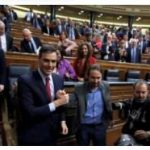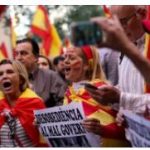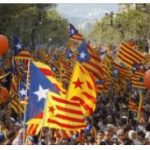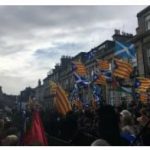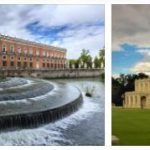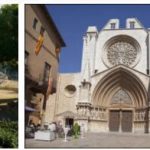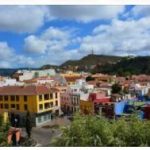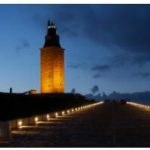The parliamentary elections on March 9, 2008, were won by the PSOE, led by Zapatero, with a clear majority (43.9% of the vote, seats increased from 164 to 169). The PP under the leadership of M. Rajoy Brey was also able to increase the number of its mandates (from 148 to 154).
Zapatero formed a minority government again, which was sworn in on April 14, 2008. His cabinet was confronted with the effects of the global financial and economic crisis, which hit Spain more than other European countries, particularly due to massive problems in the real estate sector. In view of the paralyzing economy, a package of measures was adopted in August 2008 to finance small and medium-sized enterprises and another in September 2008 to support the construction sector, which was particularly hard hit by the real estate crisis. In the period that followed, there was a sharp rise in unemployment and the budget deficit. Measures to reorganize the budget met with resistance in particular from the trade unions (general strike on September 29, 2010). With this in mind, Zapatero took on October 20, 2010 a comprehensive reshuffle of his government. Interior Minister Alfredo Pérez Rubalcaba became the new strong man in the cabinet(* 1951). The longstanding confrontation between the ruling socialists and the opposition conservatives continued unabated. In particular, the Partido Popular, together with the Catholic Church, opposed the abortion law passed by the Senate on February 24, 2010, which legalized abortions up to the 14th week of pregnancy. On January 27, 2011, the government announced a gradual increase in the retirement age from 65 to 67 years. This step was seen as a signal to the markets that the highly indebted country was introducing structural changes in order to overcome the financial crisis without help from the euro rescue package. On May 15, 2011 there were protests in 50 cities because of the massive austerity measures and high unemployment. The group “Democracia Real Ya” (German “Echte Demokratie Jetzt”) had called for this on the Internet. The demonstrators called themselves “Indignados” (German for “outraged”). Later the name “Movimiento 15-M” (German “Movement of May 15”) came up. The protest movement tried to influence the upcoming local and regional elections. The PSOE suffered heavy losses in these elections on May 22, 2011. The party decided Alfredo Pérez Rubalcaba (* 1951) on July 11, 2011 as the top candidate for the next parliamentary election. This then resigned his ministerial office. Zapatero had previously announced that he no longer wanted to run as a top candidate. On May 27, 2011, riots were perpetrated for the first time during protests in Barcelona. 120 people were injured, including 37 police officers. On July 24, 2011, thousands gathered for a star march at the Puerta del Sol in Madrid. Days before, they had set out for the capital on foot from all parts of the country. Here demonstrations on August 4, 2011 led to violent clashes between »Indignados« and security forces. Days earlier, the government had cleared the square on Puerta del Sol, where the protesters had been waiting for weeks. Due to the crisis and the defeat in the local elections, Prime Minister Zapatero resigned held early elections on July 29, 2011 and dissolved parliament on September 26, 2011. In the polls, which took place on November 20, 2011, the PP won a landslide victory with its top candidate M. Rajoy . With 186 out of 350 seats, the party was able to achieve its best election result to date. In contrast, the PSOE lost 59 of its 169 seats to date and, with 110 seats, recorded the worst election result since the re-establishment of democracy in Spain. On December 20, 2011, M. Rajoy was elected as the new Prime Minister.
According to softwareleverage, the country remained in recession in 2012 and was initially only able to refinance itself with great difficulty on the capital market. On June 10, 2012, the EU announced that it was making around € 100 billion available to Spain to rehabilitate the banking sector. By applying for the aid not for the country but for a specific sector, Spain escaped strict requirements and controls on its state budget. The Rajoy government’s extensive austerity efforts affected all sections of the population. On January 11, 2012, Parliament passed a first draft of savings worth € 15 billion. A month later, the government also decided to reform the labor market, which allowed for more flexibility in hiring and firing, v. a. to reduce high youth unemployment. On July 11, 2012, Rajoy Another austerity program is proposed in parliament to reduce the state budget through cuts and tax increases – among other things. the VAT from 18% to 21% – to be relieved. In 2011, three troubled Spanish banks had become state-owned. In May 2012, the country’s fourth largest bank, the ailing Bankia, was nationalized. On December 3rd, 2012, following a formal request, the EU finance ministers approved aid of € 39.5 billion for the Spanish banking sector. On March 29, 2012, the unions called for a 24-hour general strike against the far-reaching austerity measures. Tens of thousands of Spaniards protested against the government’s labor market reforms. Local public transport was affected, as were factories, ports, and wholesale markets, as well as newspapers and television stations. Nine people were injured in rioting and 58 strikers were arrested. On June 14, 2012, there were violent clashes between miners and police in the province of Asturias.

